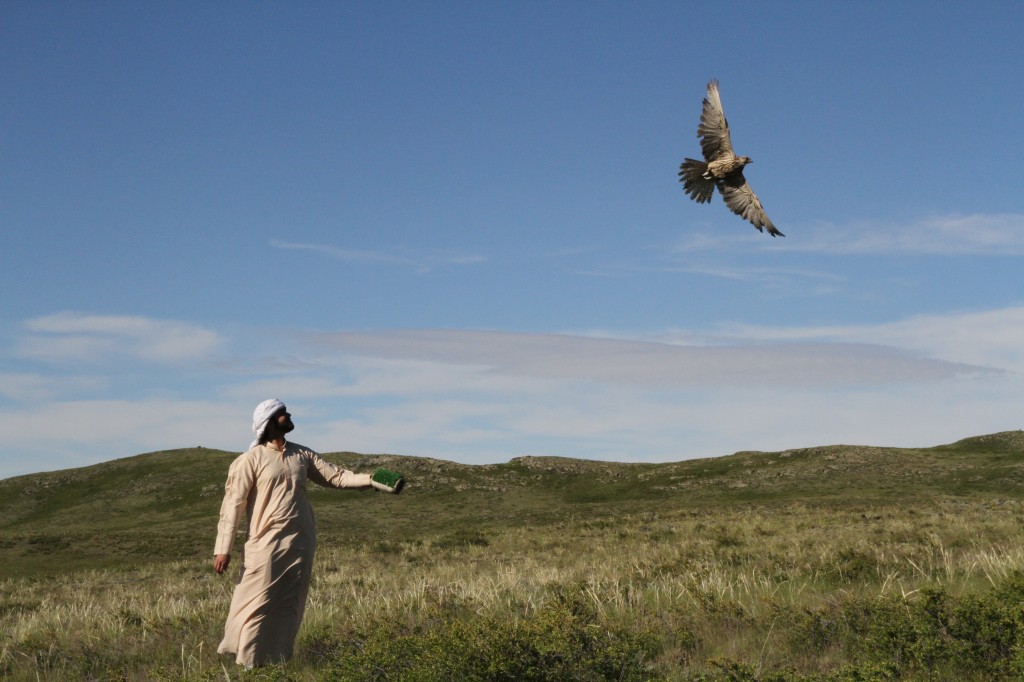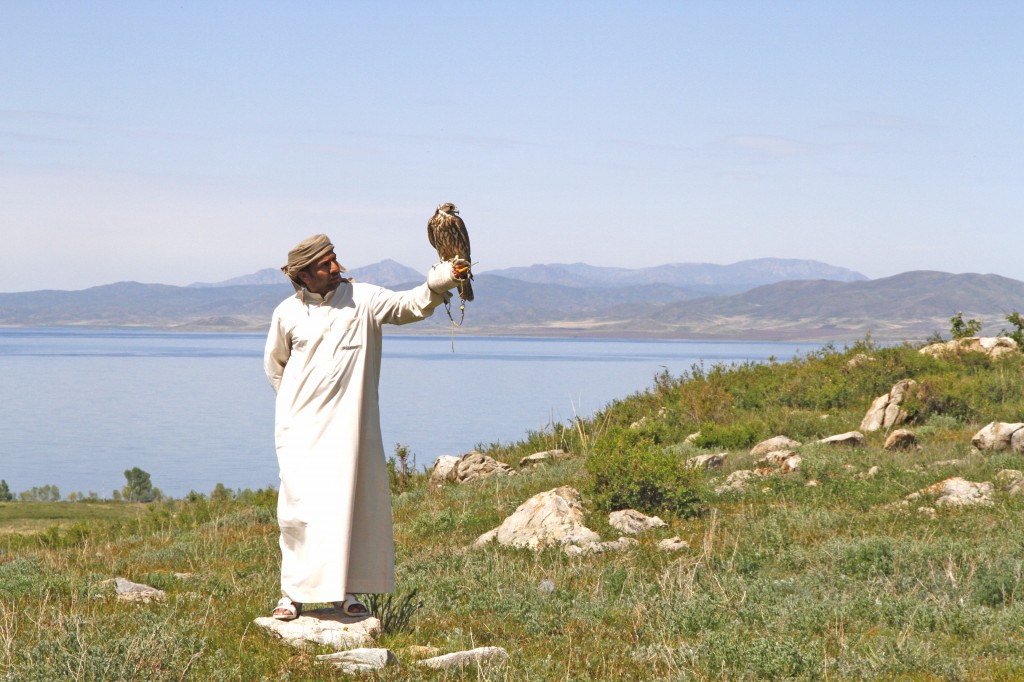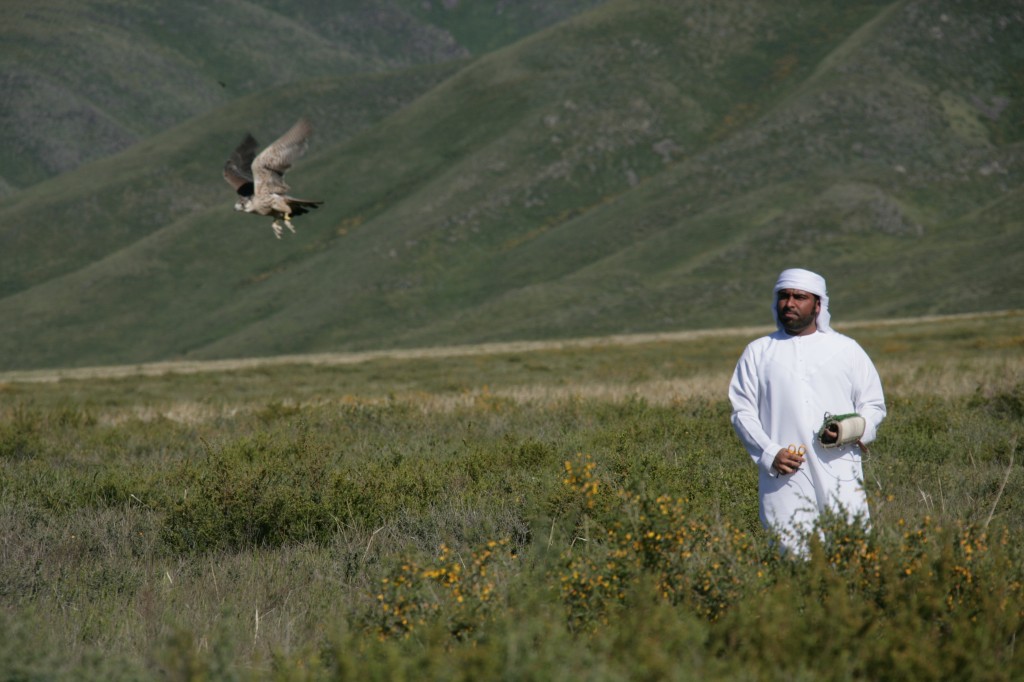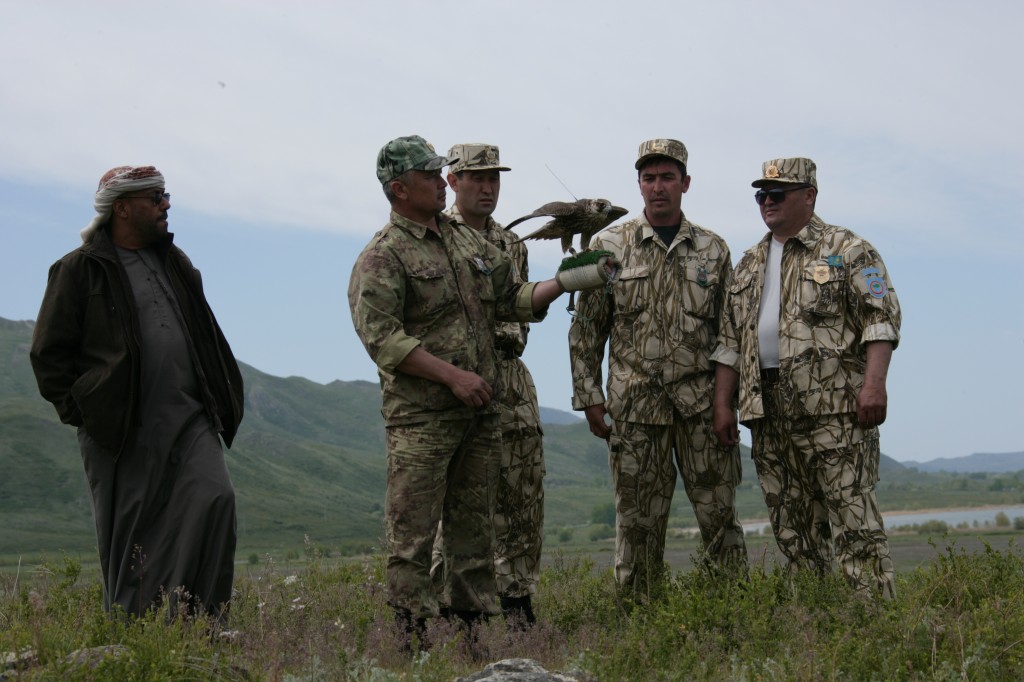ASTANA – This May saw another release of falcons from the United Arab Emirates into their natural habitat in western Kazakhstan, thanks to the Sheikh Zayed Falcon Release Programme, the International Fund for Houbara Conservation and the Kazakh government. This year, 55 falcons were released: eight female saker falcons, 41 female peregrines and six male peregrines, according to UAE news source The National.
“The falcons are being released in Kazakhstan as this has been identified as the optimal environment for them to survive in after being released,” Mohammed Al Baidani, director general at the International Fund for Houbara Conservation, told The Astana Times July 7. “The mountains and plains are situated within the falcons’ migration and breeding range, and there is plenty of prey that allow them to live and to grow in numbers.”
The Sheikh Zayed Falcon Release Programme has been active for 21 years and in Kazakhstan for seven, Al Baidani said. The programme is overseen by the Abu Dhabi Falcon Hospital. The falcons are released back into the wild as part of a research programme investigating whether migratory birds, such as peregrine and saker falcons, will maintain the same migration routes after they have been used for falconry, according to the Abu Dhabi Falcon Hospital’s website. It also provides information on how to select and prepare rehabilitated falcons to survive in the wild.
The International Fund for Houbara Conservation has a breeding centre in Kazakhstan that cooperates with the falcon release programme, providing ecological, logistical and technical support, Al Baidani explained. Houbaras are a type of bustard native to North Africa whose migration route extends to Kazakhstan. They are often hunted with falcons. The houbara breeding centre also cooperates with Kazakhstan to breed and release thousands of houbaras in the country every year, as the country is a natural part of their migratory path, Al Baidani said.
“We believe it is important to preserve a healthy ecosystem of migratory birds in the wild, and it’s great to be able to contribute to the release of more birds into their natural habitat,” Al Baidani said.
The houbara fund and the falcon release programme also cooperate with the Ministry of Agriculture and its Forestry and Hunting Reserve Committee. “Protecting wild species and respecting cultural values by protecting the heritage status of falconry and conserving the Asian Houbara is a multifaceted task and we are happy to have such a strong cooperative agreement with authorities in Kazakhstan to support ecological diversity,” Al Baidani said.
Most of the falcons are either donated to the programme or have been confiscated by authorities, Al Baidani said, but they also take in falcons that are found injured in the wild or taken in anti-smuggling operations. They also received a number of birds after the UAE signed the Convention on International Trade in Endangered Species of Wild Fauna and Flora in 2001. Following that, “the wild falcons that UAE residents used to be able to keep were given to the Abu Dhabi Falcon Hospital for care and release,” Al Baidani said.
Kazakhstan sits at the crossroads of three major bird migration routes, and hundreds of species use the Korgalzhyn nature reserve in the Akmola region as a refuge and breeding ground every spring, which is when the falcons are released in the country. The release also coincides with the traditional end of falcon hunting season, Al Baidani said. “Initially, the effort served to release falcons back into the wild after the hunting season ended during spring. Maintaining this longstanding tradition is a good way of strengthening the wild population of both peregrine and saker falcons around the world, enabling them to breed in the wild, while showing appreciation for our heritage.”
The release programme also tracks falcon behaviour after release. “Each bird is fitted with a microchip and an identification ring, so that analysts can monitor survival rates and flight patterns. Some of the released birds of prey (five sakers and five peregrine falcons respectively) are also fitted with satellite transmitters to monitor their flight paths and provide data about the survival rates of the released falcons in the wild,” Al Baidani explained.
Some falcons travel thousands of kilometres as part of their annual migration, he said, including one peregrine that travelled nearly 12,000 km in fewer than seven months, from the Arctic Circle to Iraq. And, happily, data from monitoring indicates that survival rates of rehabilitated falcons at a minimum match the survival rates of those falcons born in the wild, Al Baidani said. Survival rates of wild-born falcons are low, he said, with mortality especially high in the first few months after hatching.
“Conservation is an area that is very close to the hearts of UAE leadership,” Al Baidani said. “We think it is of the utmost importance to preserve and protect natural ecosystems.”



